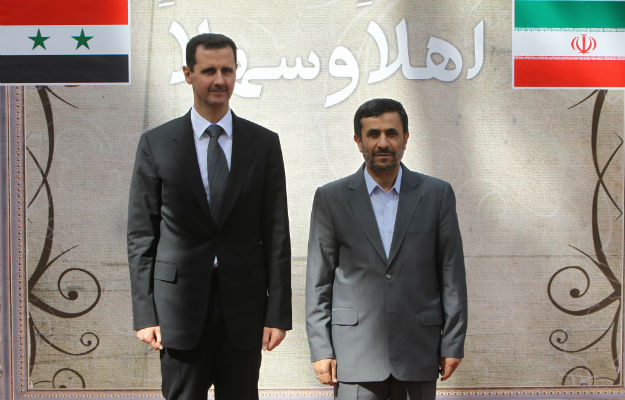
From Adam Entous, Julian E. Barnes, and Nour Malas, the Wall Street Journal: The U.S. has been mounting a secret but limited effort to speed the fall of Syrian President Bashar al-Assad without using force, scrambling spies and diplomats to block arms and oil shipments from Iran and passing intelligence to front-line allies.
A centerpiece of the effort this year focused on getting Iraq to close its airspace to Iran-to-Syria flights that U.S. intelligence concluded were carrying arms for Assad loyalists—contrary to flight manifests saying they held cut flowers. The U.S. has also tried to keep ships believed to carry arms and fuel for Syria from traversing the Suez Canal, with mixed results.
The behind-the-scenes efforts by the Central Intelligence Agency, the State and Treasury departments and the military point to a broader American role in the campaign against Mr. Assad than previously acknowledged. The efforts have ramped up recently as relations with some in the Syrian opposition have warmed and as Mr. Assad has grown more desperate for supplies. . . .
U.S. officials acknowledge the limitations that come from the Obama administration’s unwillingness to get entangled in the conflict. While some weapons flights to Syria have been stopped, officials say intelligence is hard to obtain and overseas governments can be balky about cooperation. Some shipments of arms and fuel for Syria have slipped through. . . .
A senior U.S. intelligence official said the administration recently decided to ramp up efforts to counter the Syrian regime.
"There is a renewed effort to crack down in any way possible," another senior U.S. official said, pointing to stepped-up efforts to block certain shipments through the Suez Canal, which is controlled by Egypt. . . .
One example of the U.S. approach—and of its limitations—came earlier this year when the U.S. sought to pressure Iraq to curtail flights between Iran and Syria across Iraqi airspace. That supply route opened wide after the U.S. completed its troop withdrawal from Iraq in December, U.S. administration and military officials say.
The next month, the CIA picked up detailed intelligence that Iran was using an Iranian private cargo airline, Yas Air, to fly arms over Iraq to Syria, according to U.S. officials. . . .
In an official complaint to Baghdad called a démarche, the U.S. demanded an end to the flights, said officials briefed on the discussions. "You’ve got to stop this," the Americans told Iraqi leaders, according to one senior U.S. official.
The démarche appeared to persuade the Iraqis to act, according to American officials; the flights stopped.
But in late January and early February, the CIA began to track flights of Syrian government AN-76 cargo planes between Syria and Iran, a new tactic. . . .
While U.S. and Iraqi officials went back and forth on the issue, several Syrian cargo planes made the trip to Iran and back without interference.
As Iraq prepared to play host to an Arab League meeting at the end of March, which would showcase its emergence from American occupation, U.S. officials raised the possibility Iraq would face disclosures about the flights—an embarrassment because most Arab nations had turned against Mr. Assad.
The warning appeared to get through. Iraqi leaders told the U.S. they might search the suspect flights. Two weeks before the Arab League summit, the flights of the Syrian AN-76 cargo planes abruptly stopped, U.S. officials say. (photo: Atta Kenare/AFP/Getty)
Image: getty%207%2023%2012%20Assad%20Iran.jpg
